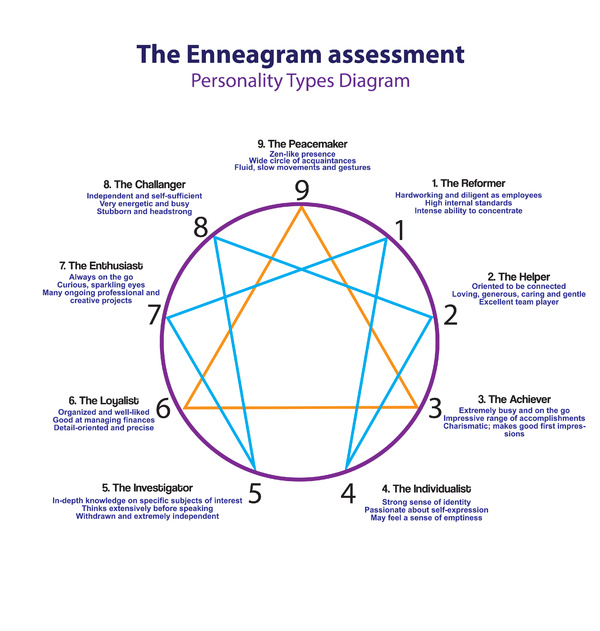THE WORLD’S #1 EXECUTIVE COACHING AND BUSINESS COACHING BLOG SINCE 2017.
Navigating the Map of Leadership Maturity: Understanding Nine Distinct Leadership Traits
August 2, 2023 | Category: Blog, Leadership Maturity | Last updated on: March 12, 2025
The Map of Leadership Maturity defines nine leadership traits and their interdependencies. It doesn’t pigeonhole leaders based on their traits. Instead, it gives them an insight into their strengths and weaknesses while explaining how they can become their best selves. The Map can help leaders achieve meaningfully higher levels of self-awareness.
“While personal maturity may mean being able to see beyond yourself, leadership maturity means considering others before yourself.” – John C. Maxwell.
Great leaders aren’t always smarter than others. Often, they owe their success to their resilience, agility, and maturity. From the perspective of leadership coaching, maturity is an essential leadership trait. Lacking maturity is a significant handicap for leaders and employees alike in this day and age.
As unrelenting internal and external challenges shape organizations, forcing them to flatten their hierarchical structures and delegate decision-making, maturity gains more and more importance. Everyone is a leader nowadays. And only mature leaders can make responsible and productive decisions that benefit all stakeholders.

Leadership maturity carries more weight than ever before.
The Map of Leadership Maturity is a leadership coaching tool that helps leaders, emerging leaders, and decision-making employees understand their strengths, weaknesses, and development needs. By learning about the nine leadership traits and assessing their levels of maturity, users of this tool can become more self-aware and make better decisions.
The Map of Leadership Maturity is an Enneagram. It features nine points corresponding to the nine leadership traits that combine to define us all through our distinct behaviors, feelings, thinking, and ways of interacting with the world.
Every person’s inner core carries behavioral tendencies primarily associated with a dominant leadership trait. This same inner core also bears the marks of at least a couple of other secondary leadership traits.
The Enneagram defines the inner-core values that leaders live and lead by. Maturity allows leaders to understand these values and decipher the triggers behind their actions and behaviors.
How the Map of Leadership Maturity Works
The Map divides the nine essential leadership traits into three groups:
- Heart leaders
- Head leaders
- Gut leaders
Far from labeling leaders and corralling them into one of the three groups, the Map recognizes that every individual inner core possesses elements from all three groups. It makes it clear, however, that every inner core relies predominantly on a Head, Gut, or Heart leadership style.
Psychologists have used Enneagrams to illustrate personality types.
Here’s how it breaks down the three groupings:
- Artists, Entertainers, and Helpers belong to the Heart group.
- Disciples, Thinkers, and Activists are predominantly Head leaders.
- Arbitrators, Perfectionists, and Drivers are in the Gut group.
Exploring the Nine Leadership Traits
Self-image is one of the weaknesses of Helpers, Entertainers, and Artists, leaders belonging to the Heart group. They all find it challenging to express their feelings adequately. They either over-express them (Helpers) or under-express them (Artists).
Entertainers
Entertainers are models of adaptability, flexibility, and service. Eager to serve others, they may have problems understanding their feelings, choosing to hide their real selves behind a projected image.
They enjoy being valued socially and see themselves as respected and admired members of the community.
Artists
From the perspective of executive coaching, mature Artists enjoy a head start. They are naturally self-aware and can help others read and understand their feelings better. When derailing, such leaders shift their focus to negative feelings and become withdrawn or self-hating.
Helpers
Empathy is the hallmark of solid leaders, and Helpers excel at it. Mature helpers are true servant leaders. They help others unselfishly. When they start to derail, however, Helpers tend to use their generosity to control others. Derailing Helpers may become manipulative and use their generous, empathic images for selfish purposes.
Head leaders solve problems with logic and thinking. They like to get things done. They also tend to struggle with insecurities and seek certainty and safety. Head leaders may withdraw into their personal intellectual refuge or blindly follow the bidding of an authoritative entity.
Thinkers
In their mature forms, Thinkers dazzle as outstanding problem-solvers. They’re quick to put their sound theories into practice. As they derail, however, they tend to put off action to ensure the correctness of their theories. This behavior may degenerate into an utter inability to act.
Disciples
Disciples represent the pinnacle of reliability. They’re always there and never let anyone down. Immature Disciples grow overly dependent on input from an authoritative figure. Derailing disciples are unable to act on their own. Their complete dependence on authority may drive these leaders to self-loathing.
Activists
Activists are busy bees, looking to accomplish a plethora of goals every day. Mature Activists know how to pace their efforts and set goals. Immature activists lose focus and efficacy. They are as busy as ever but fail to accomplish anything.
Gut leaders tend to allow their environments to define them. They want to dominate it, perfect it, or get along with it. The dangers of allowing your environment to control you are obvious. Gut leaders may grow frustrated with others.
Drivers
Mature Drivers radiate confidence.
These leaders are easy to follow into battle. Their confidence inspires confidence in their followers, and their accomplishments speak for themselves. Tempted to see themselves as better than others, derailing Drivers may run roughshod over their team members as they chase their goals.
Arbitrators
Empathy is one of the main strengths of these leaders. They investigate, understand and accept. They make others feel at ease around them. When they derail, Arbitrators may lose touch with reality and place others on undeserved pedestals.
Perfectionists
Never confused, mature Perfectionists know what’s right and wrong. They make things clear for their followers and are always fair. Derailing Perfectionists may get caught up in minutiae, losing focus and sight of their own deficiencies.
Leadership Maturity and Self-awareness
In the eyes of an executive coaching professional, self-awareness is the root of leadership maturity. It serves as the foundation of the introspection leaders need to achieve a high-enough level of emotional intelligence to translate into skills we appreciate in mature leaders, like authenticity, empathy, and effective communication.
Business coaching specialists know that self-aware leaders are more adaptable and growth-focused. They are also better strategic decision-makers. And you don’t have to be a business coaching expert to appreciate the power of trust, empathy, and effective role-modeling in leadership.
The Map of Leadership Maturity allows leaders to derive a solid, science-based, and reality-rooted basis for self-awareness and self-reflection. It lets leaders discover their strengths and blind spots and explain their proclivities.




